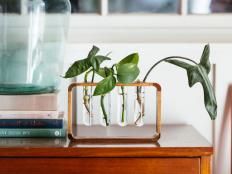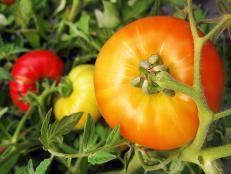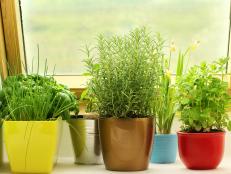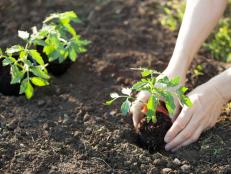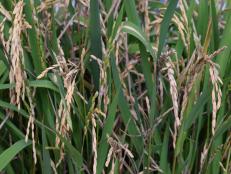How to Plant in Rocky Soil
Is rocky soil turning your landscaping dreams of green to gravel? Rocks make for a great garden above ground, but when the soil below is made up of the same impenetrable stone, plant roots have a tough time getting the nutrients they need to survive. So what do you do if your yard is full of rocky soil? Homeowners across the country blast, backhoe and burrow their way through compacted soil, not always with satisfactory results.
However, rocky soil expert Carolyn Singer has another tactic. Hundreds of years ago her yard high in the northern California hills was a wagon road and because of that traffic, her soil is concrete-hard. Her first step to transforming the soil is to bring in a backhoe to see what's there.
Teeth marks carved into the soil by the backhoe are a pretty good indication that digging down won't work. Another clue is the zillions of rocks scooped up. "We realized that we're not going to be able to dig down, so we'll have to build out," Singer says.
Rocks aren't all that biologically active, which means that they don't enhance the soil's productivity much. Singer wants to plant lavender in this cove someday, so to prepare the soil she's layered compost over the past several years in that specific area. The compost contains plant trimmings and plenty of grass clippings.
The compost is very loose, compared with the original hard clay. Singer's luscious compost is mixed with the native soil because sooner or later that's where the lavender roots will get their food and water. It wouldn't work to just spread compost over the compacted soil and plant in it. "The plants would be unhappy because they need this clay soil to grow in," she explains.
Just as rocks can affect what you plant below ground, they can affect what you plant above ground, too. Rocks can create microclimates that may either help or hinder growth. "In the winter when the sun is at a lower arc, the rock itself is casting shadows on the north end," says Singer, "and that can spell death for a particular plant if in fact it doesn't like to stay in wet clay soil all winter long. But in the summertime, that can be a blessing."
For instance, dianthus loves the reflected heat from the rocks it's nestled between. In contrast, creeping thyme doesn't flourish in a similar planting. Alyssum is a great rock garden plant, but deer love it and you might find yourself having to replace it. Rocks placed around a plant insulate it just like mulch, keeping it drier on top but moist underneath, so you can water less frequently.
If you still feel like you're between a rock and a hard place trying to garden in rocky soil, choose the kinds of plants that will tolerate your soil. Ask your local nursery or garden expert for the best bets. Also, know the depth of the soil that you're putting the plant into to help determine what plant size is appropriate. Using bigger potted plants in rocky soil isn't always better.
The more fibrous roots found in larger potted plants often have a tougher time penetrating the hard soil. The younger, more pliable roots of this fescue may have a better chance of getting established if they're spread out almost on top of the rocky soil.
So should you remove most rocks from the soil? "Well, sure, if you're willing to take the time to do it, and that's especially true if you're putting in a new vegetable garden," says master gardener Paul James. "After all, vegetables are annuals and they need all the help they can get."
There are lots of ways to deal with rocky soil in the yard and garden, Paul says. "Either working with the rocks or around them, one thing's for sure: the less you have to dig, the happier you and your plants will be."

.-Battle-on-the-Beach-courtesy-of-HGTV.-.jpg.rend.hgtvcom.196.196.suffix/1714761529029.jpeg)




